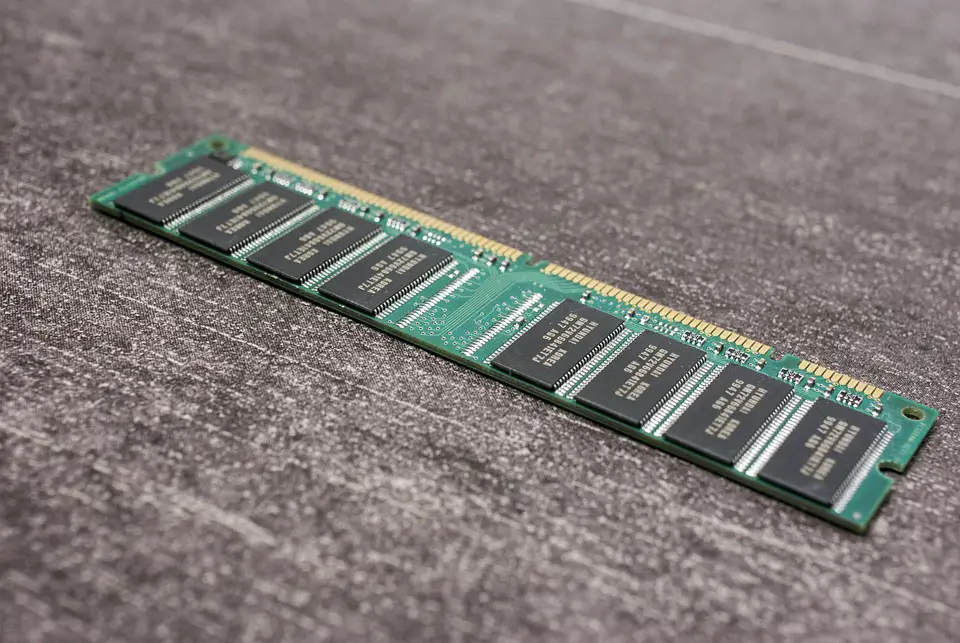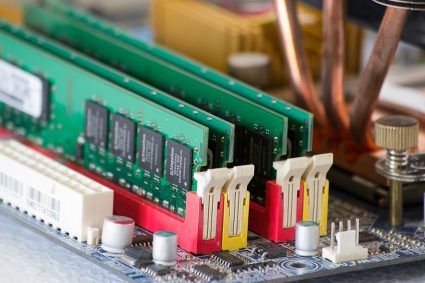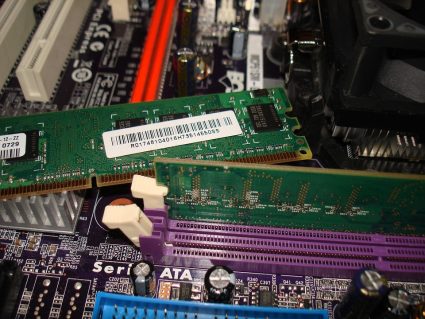
Choosing the right type of RAM for your laptop is an important decision when it comes to maximizing your laptop’s performance and capabilities. RAM, or random-access memory, is a form of computer memory that is used to store data that can be accessed quickly and easily. In this article, we will discuss the basics of RAM and how it works, as well as the differences between RAM and storage, so that you can make an informed decision when selecting the right type of RAM for your laptop.
Content of the page
What is RAM?
Definition of RAM
RAM stands for Random Access Memory, and is a form of computer memory that is used to store data that can be accessed quickly and easily. RAM is essential for a computer to operate, as it allows the processor to quickly and easily access information that is stored on the RAM.
How Does RAM Work?
RAM works by storing data in a series of memory cells, which are arranged in a grid-like structure. The processor is then able to access the data stored in the cells quickly and easily, allowing it to perform tasks and operations more quickly than if the data was stored on a hard drive or other type of storage device.
When a program or application is running, the processor will read the instructions stored in the RAM, and then execute them. As the processor executes the instructions, it will also store data in the RAM, which can then be accessed quickly and easily by the processor when needed.
RAM vs. Storage: What’s the Difference?
The key difference between RAM and storage is that RAM is used to store data that can be accessed quickly and easily, while storage is used to store data that is not needed immediately. Storage is typically used to store large amounts of data that is not needed immediately, such as music, videos, and other large files.
RAM is also typically much faster than storage, as it is designed to be accessed quickly and easily. This makes RAM ideal for running programs and applications, as the processor can access the data stored in the RAM quickly and easily. Storage, on the other hand, is much slower, as it is not designed to be accessed quickly and easily.
Why is RAM Important for Laptops?

Random Access Memory (RAM) is an important component of any laptop, as it affects the performance of the device. RAM acts as a temporary storage area for data that is actively being used by the computer. When you open a program, the data is loaded from the hard drive into the RAM. This allows the program to run faster because it no longer has to read the data from the hard drive. As more data is loaded into RAM, the speed of the laptop will increase.
The amount of RAM in a laptop is expressed in gigabytes (GB). The more RAM a laptop has, the more data can be stored in the RAM, which allows the laptop to run faster and more smoothly. Most laptops come with 4GB to 8GB of RAM, which is usually enough for everyday tasks like web browsing, word processing, and streaming videos. However, if you plan on doing more intensive tasks like gaming or video editing, then you should look for a laptop with more RAM.
How Much RAM Do You Need for a Laptop?
The amount of RAM you need for a laptop depends on what you plan to do with it. For basic tasks like web browsing and word processing, 4GB to 8GB should be enough. For more intensive tasks like gaming and video editing, you should look for a laptop with 8GB to 16GB of RAM. If you plan on doing very intensive tasks like 3D rendering or video editing with multiple video streams, then you should look for a laptop with 16GB or more of RAM.
It’s important to note that most laptops don’t allow you to upgrade the RAM after purchase. So, if you plan on doing more intensive tasks in the future, you should buy a laptop with at least 8GB of RAM.
What Happens When You Don’t Have Enough RAM?
If your laptop doesn’t have enough RAM, it will start to slow down as you open more programs. This is because the data will have to be swapped between the RAM and the hard drive, which is much slower than just storing the data in the RAM. This can cause your laptop to lag and stutter, which can be very frustrating.
You can also run out of RAM if you open too many programs at once. This is because each program needs to store its data in the RAM, and if there isn’t enough RAM available, then the computer won’t be able to open the program. If this happens, you will need to close some of the programs you’re not using in order to free up RAM.
Upgrading RAM in a Laptop: Is It Possible?
Most laptops don’t allow you to upgrade the RAM, as the RAM is soldered directly to the motherboard. However, some laptops do allow you to upgrade the RAM, usually by replacing the existing RAM with new modules. If your laptop allows you to upgrade the RAM, then you should be able to find instructions on how to do this online.
It’s important to note that most laptops don’t allow you to upgrade the RAM after purchase. So, if you plan on doing more intensive tasks in the future, you should buy a laptop with at least 8GB of RAM.
Choosing the Right RAM for Your Laptop
When choosing RAM for your laptop, you should look at the type of RAM, the speed of the RAM, and the capacity of the RAM. Most laptops use DDR3 or DDR4 RAM, so you should make sure to buy RAM that is compatible with your laptop.
The speed of the RAM is also important, as faster RAM can improve the performance of your laptop. Most laptops use RAM that runs at 1600MHz or 1866MHz, so you should make sure to buy RAM that runs at the same speed.
Finally, you should make sure to buy RAM with enough capacity for your needs. Most laptops come with 4GB to 8GB of RAM, which is usually enough for everyday tasks. However, if you plan on doing more intensive tasks, then you should look for a laptop with 8GB to 16GB of RAM.
| Feature | Description |
|---|---|
| Capacity | The amount of memory available, measured in gigabytes (GB). |
| Type | The technology used in the RAM, such as DDR4 or DDR5. |
| Speed | The frequency at which the RAM can transfer data, measured in megahertz (MHz). |
| Latency | The amount of time it takes for the RAM to respond to a request, measured in clock cycles. Lower latency is generally better. |
| Voltage | The amount of power required to operate the RAM, measured in volts (V). |
| Error Checking and Correction (ECC) | A feature that can detect and correct errors in the RAM. |
| Registered (Buffered) | A type of RAM that uses a register to buffer memory requests, allowing for larger memory capacities. |
| Dual-Channel / Quad-Channel | A feature that allows the RAM to access two or four memory channels simultaneously, increasing the memory bandwidth. |
| Form Factor | The physical size and shape of the RAM module, such as DIMM, SODIMM, or MicroDIMM. |
| Compatibility | The compatibility of the RAM with the motherboard and processor, including factors such as voltage, speed, and memory type. |
How to Check Your Laptop’s RAM

Random-access memory (RAM) is a type of computer memory that can be read and changed in any order, allowing the computer to access data quickly. Every laptop has a certain amount of RAM installed, and it’s important to know how much RAM you have in order to make sure that your laptop is running optimally. In this article, we’ll take a look at how to check your laptop’s RAM.
Checking RAM in Windows
If you’re using a Windows laptop, there are several ways to check your RAM. The easiest way is to open the Task Manager. To do this, press the Ctrl+Shift+Esc keys on your keyboard and then click on the Performance tab. Here, you’ll see the amount of RAM that is installed in your laptop.
You can also check your RAM by going to Control Panel > System and Security > System. Here, you’ll see an overview of your system, including the amount of RAM that is installed.
Checking RAM in MacOS
If you’re using a Mac laptop, you can check your RAM by going to the Apple menu > About This Mac. Here, you’ll see the amount of RAM that is installed in your laptop.
Conclusion
Knowing how much RAM is installed in your laptop is important for making sure that your laptop is running optimally. In this article, we’ve taken a look at how to check your laptop’s RAM in both Windows and MacOS. Armed with this information, you’ll be able to make sure that your laptop is running at its best.
Learn also about graphic cards (GPU) or about processors (CPU).
